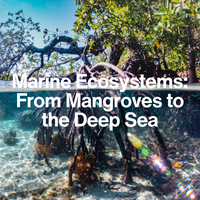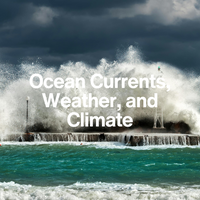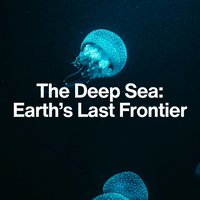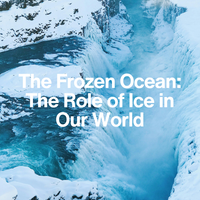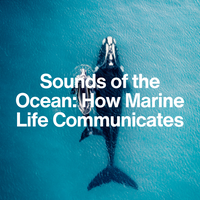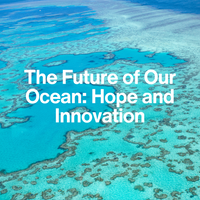LESSON 4
The Ocean’s Layers – From Sunlit Waters to the Deep Sea
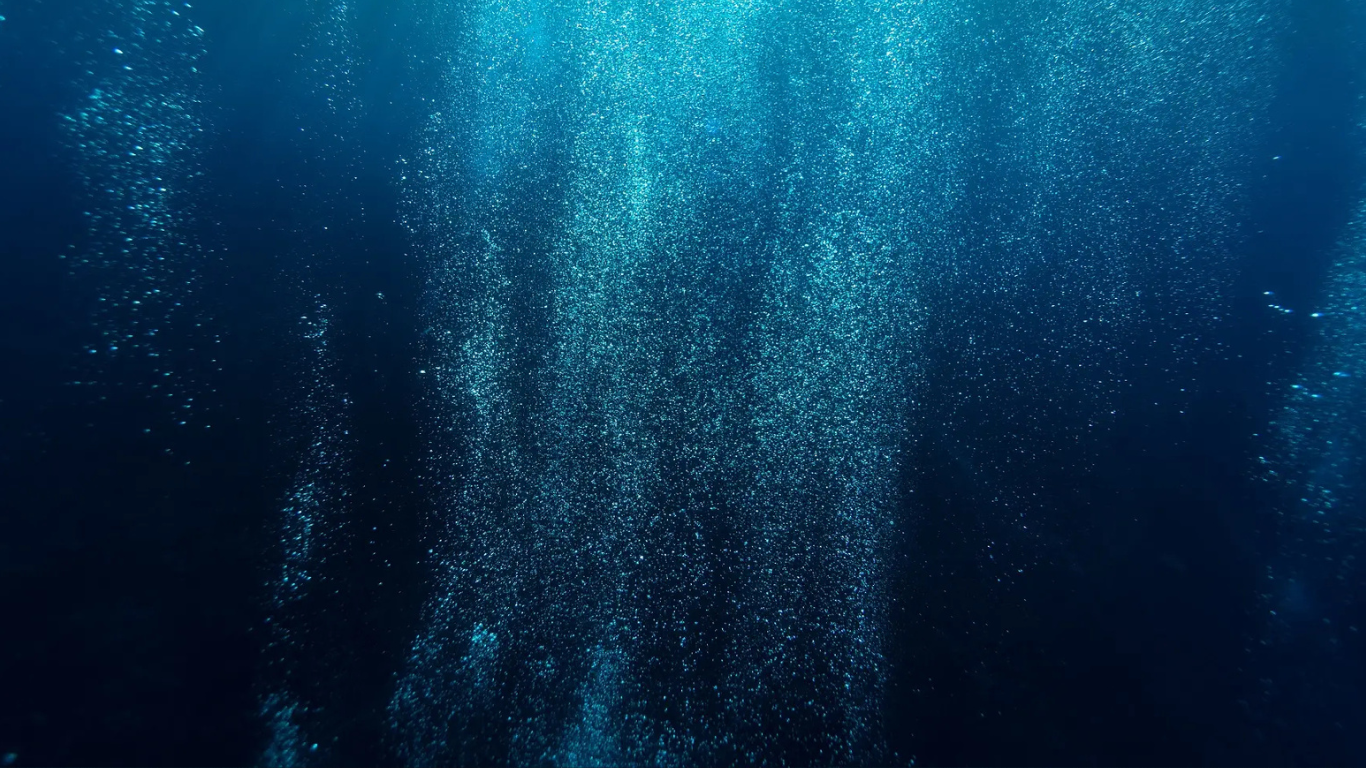
Introduction:
Uncovering the Layers of the Sea
The ocean isn’t just one uniform body of water—it’s divided into layers, each with its own unique conditions and inhabitants. From the sunlit surface to the crushing darkness of the trenches, let’s explore these mysterious zones and the incredible life that calls them home.
1. The Sunlit Zone (Epipelagic Zone) – 0 to 200 meters
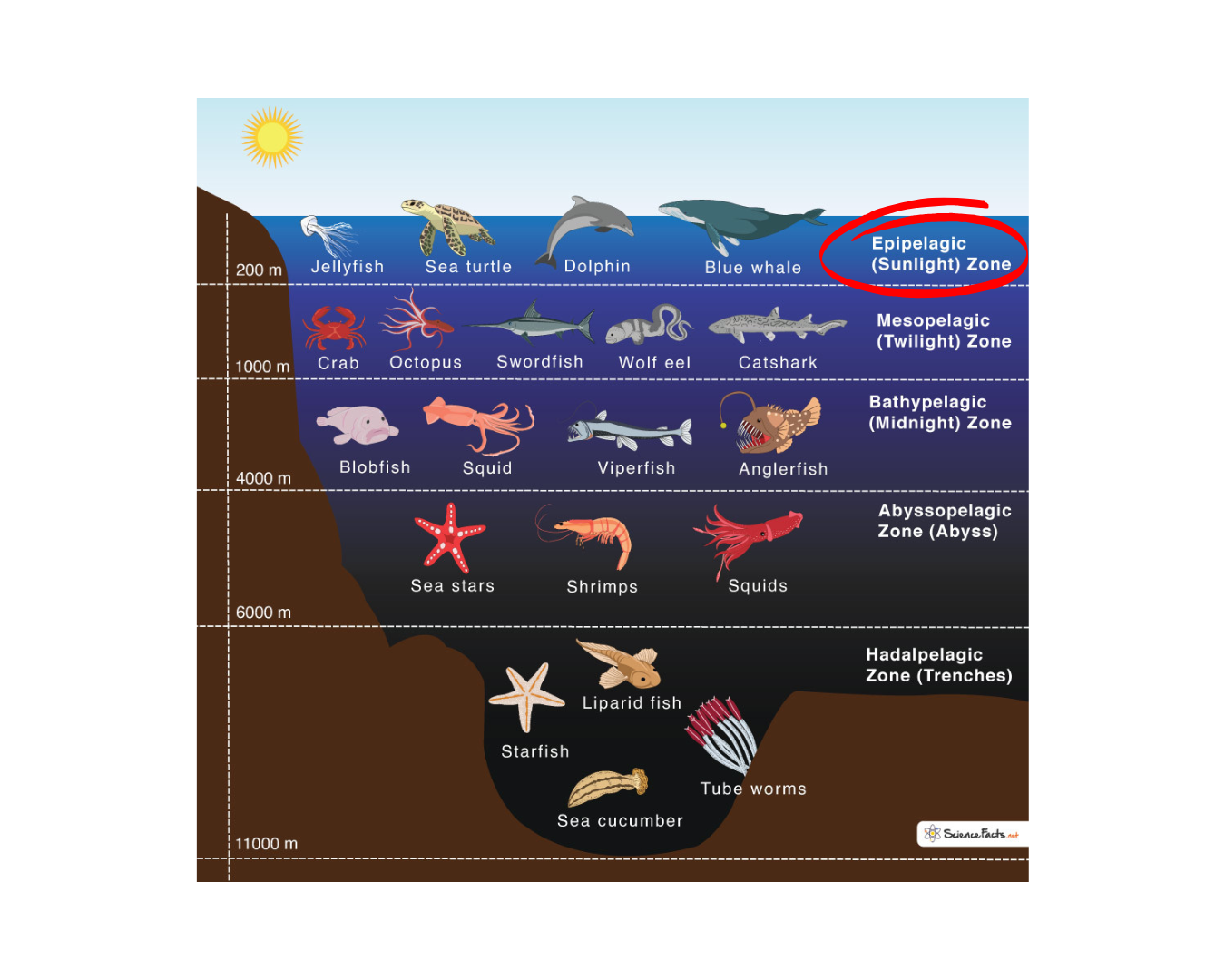
This is the ocean’s living rooftop—a warm, glittering realm bathed in sunlight. It’s the layer we see from the shore, the one where waves sparkle, and where snorkeling and surfing happen. But there’s far more going on beneath the surface.
Here, sunlight powers photosynthesis, allowing microscopic phytoplankton to produce oxygen and form the foundation of the marine food web. These tiny organisms feed everything from small fish to enormous whales, making this zone the most biologically rich part of the ocean.
- Conditions: Warm, well-lit, and turbulent from surface mixing. High in oxygen and nutrients near coastal upwellings.
- Notable Species: Tuna, dolphins, sea turtles, flying fish, jellyfish, coral reef species, and even great white sharks.
Did you know?
Coral reefs, found in this zone, are home to about 25% of all marine species, despite covering less than 1% of the ocean floor!
2. The Twilight Zone (Mesopelagic Zone) – 200 to 1,000 meters
Descend below 200 meters and the light begins to fade—it’s like entering a deep, endless dusk. Here, sunlight becomes scarce, and darkness begins to creep in. Photosynthesis can no longer occur, but life finds a way.
Animals in this dim world have evolved extra-large eyes to make the most of the fading light. Many species glow with bioluminescence—a magical, chemical light show that helps them hunt, hide, or attract mates. It’s also the zone of vertical migration, where creatures rise to the surface at night to feed, then return to the depths by day to hide in the gloom.
- Conditions: Cool temperatures, very limited light, and decreasing oxygen. Pressure starts to build.
- Notable Species: Lanternfish, hatchetfish, bristlemouths, vampire squid, swordfish, and deep-sea jellyfish.
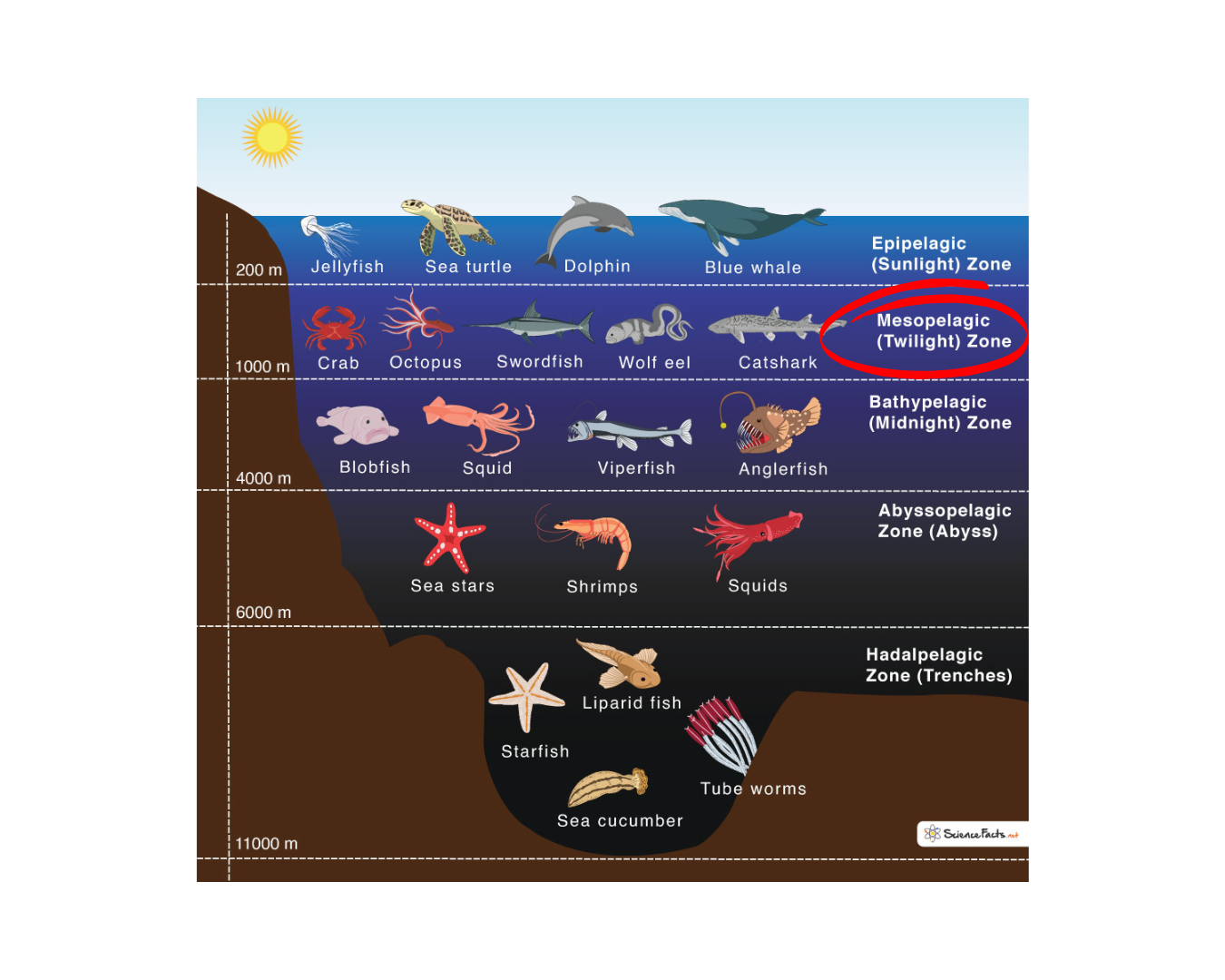
Did you know?
The lanternfish is the most abundant vertebrate on Earth, making up an estimated 65% of all deep-sea fish!
3. The Midnight Zone (Bathypelagic Zone) – 1,000 to 4,000 meters
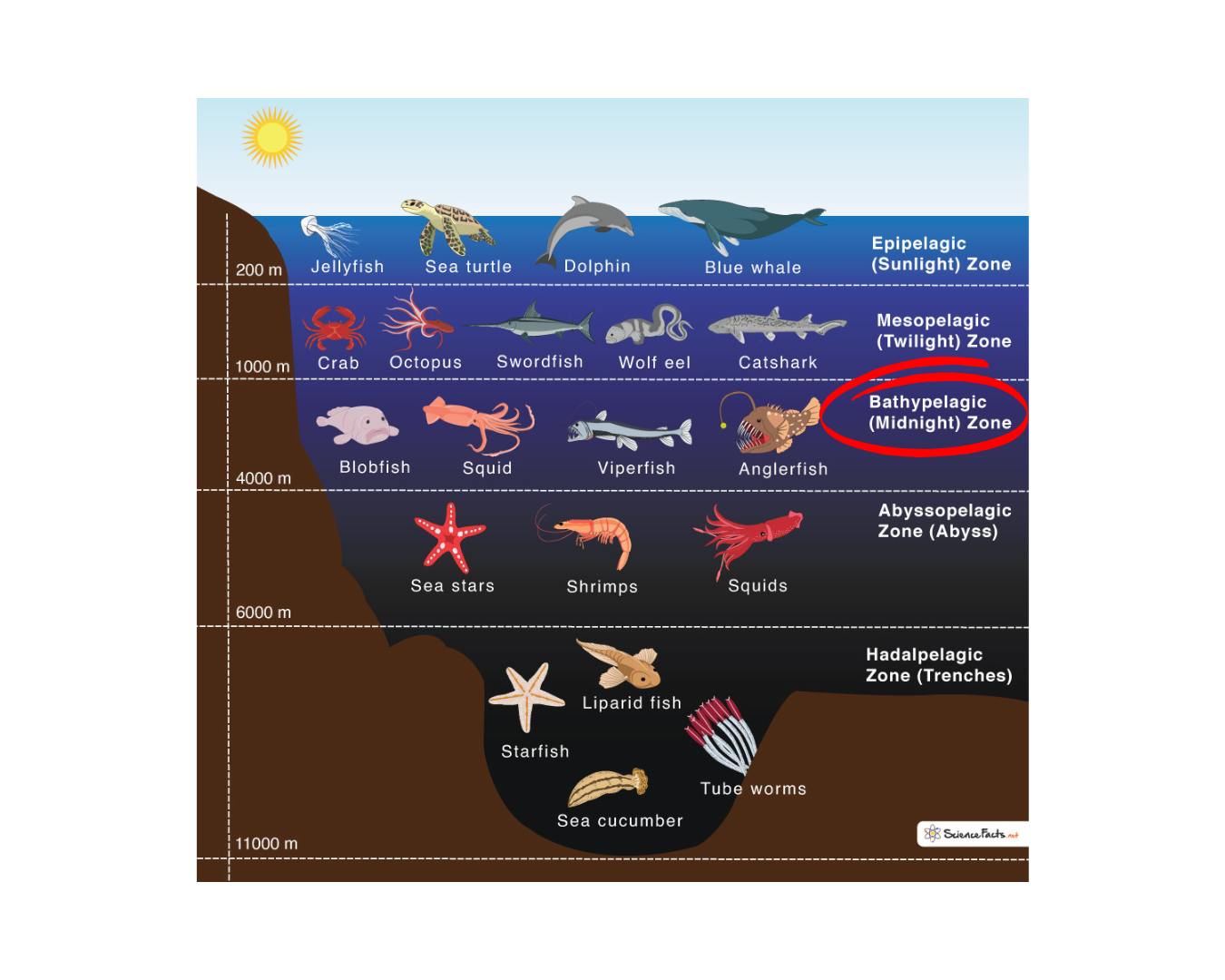
Now we enter the true darkness of the deep. No sunlight reaches this realm—it’s a pitch-black world where most creatures make their own light using bioluminescence. It’s cold, lonely, and eerie—but teeming with oddities.
The pressure here is immense, but life has adapted in astonishing ways. Some creatures have gelatinous bodies, others enormous mouths and expandable stomachs. Food is scarce, so many are opportunistic predators—or scavengers waiting for scraps to drift down from above.
- Conditions: Total darkness, freezing temperatures (~4°C), and crushing pressure. Oxygen increases slightly at depth due to deep, cold currents.
- Notable Species: Anglerfish, gulper eels, giant squid, fangtooth fish, deep-sea jellyfish.
Did you know?
The anglerfish uses a bioluminescent lure (produced by symbiotic bacteria) to attract prey in the dark!
4. The Abyss (Abyssopelagic Zone) – 4,000 to 6,000 meters
Welcome to the abyss—a word that evokes bottomless depth and silence. This zone covers more than 80% of the ocean floor, yet it remains one of the least explored places on Earth. It’s a realm of slow-motion life, where creatures drift or crawl across vast plains of soft sediment.
Here, life moves slowly, and every bit of energy counts. Some organisms feed on marine snow—tiny particles of organic matter that rain down from above. Others feast on the occasional whale fall, when a dead whale sinks to the seafloor and becomes a feast for years.
- Conditions: Perpetual darkness, near-freezing temperatures, and pressure over 400 times that at the surface.
- Notable Species: Deep-sea cucumbers, giant amphipods, abyssal octopuses, sea spiders, and xenophyophores.
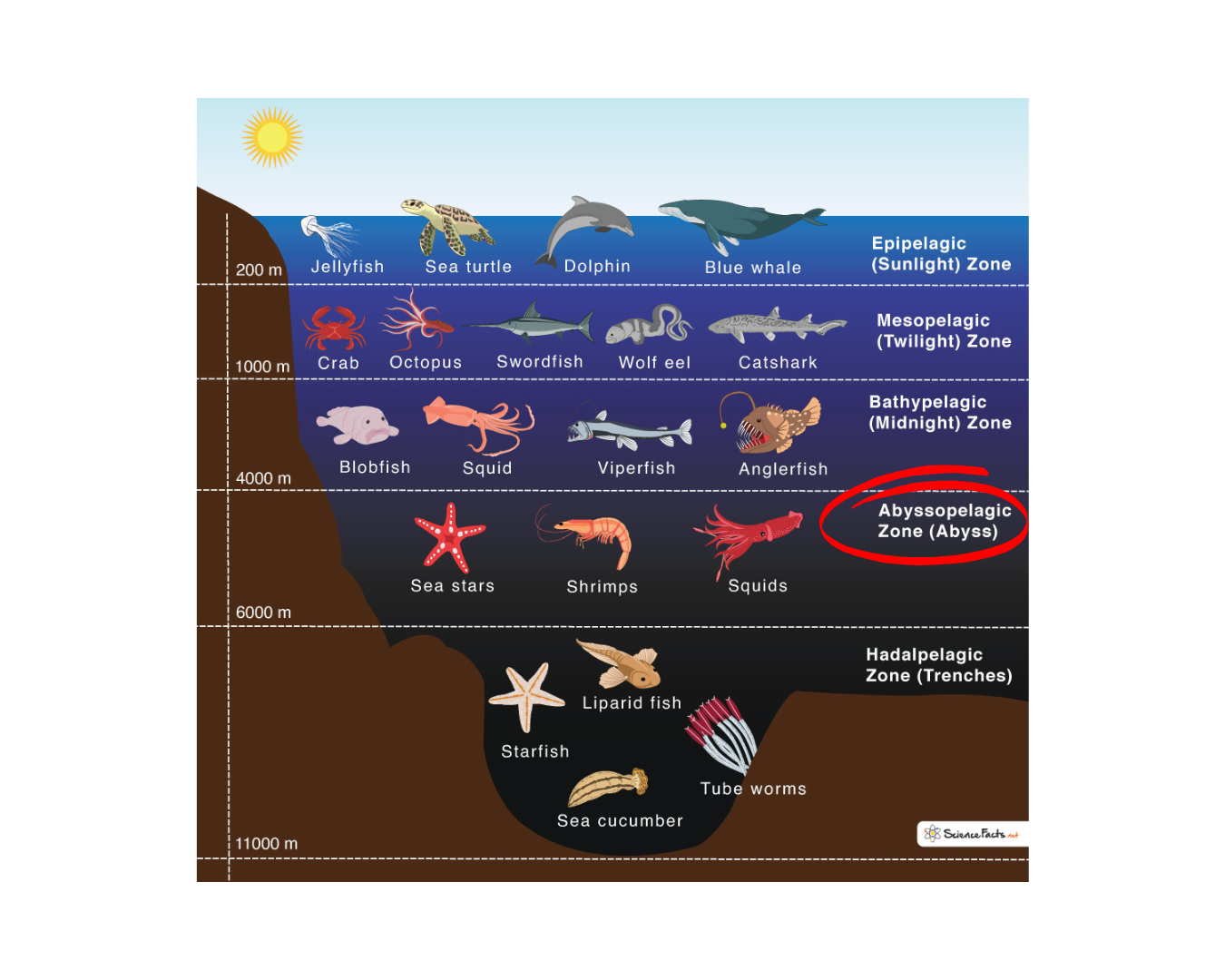
Did you know?
The deepest-living fish ever recorded, the abyssal snailfish, was found at 8,336 meters!
5. The Trenches (Hadalpelagic Zone) – 6,000 to 11,000 meters
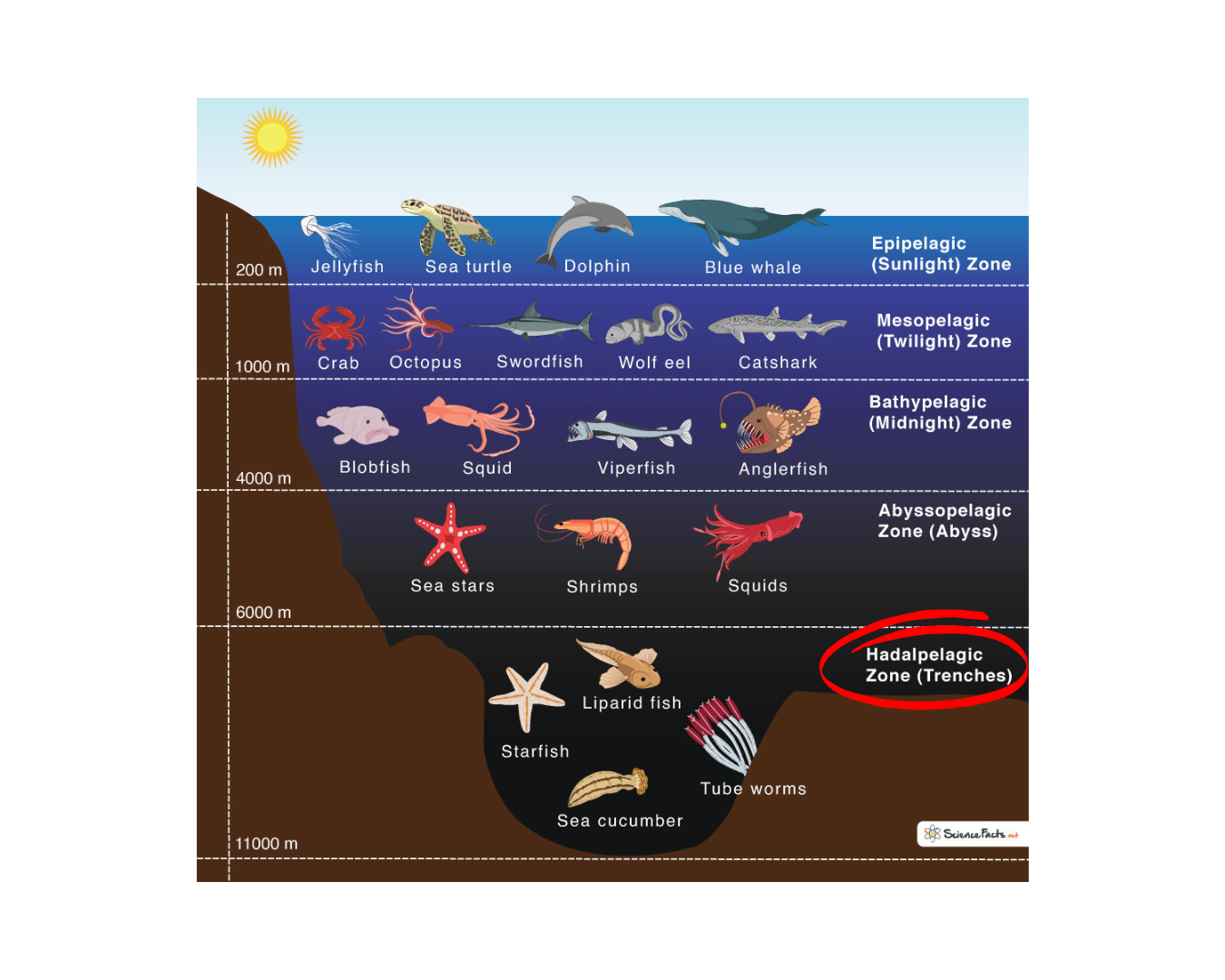
Now we plunge into the deepest places on Earth—the ocean trenches. Found in narrow, steep-sided valleys formed by subduction zones, this is the most extreme environment in the ocean, where few organisms can survive.
Temperatures hover just above freezing, and pressure can reach over 1,100 atmospheres. Yet life endures. Strange, transparent fish, shrimp-like amphipods, and massive, single-celled organisms called xenophyophores call this zone home. Everything is slow-moving, adapted to low-energy living, and eerily beautiful.
- Conditions: Crushing pressure, darkness absolute, low temperatures, and limited food.
- Notable Species: Hadal snailfish, amphipods, xenophyophores, and bacteria that survive in complete isolation from sunlight.
Did you know?
The deepest recorded dive by a submersible was 10,927 meters into the Mariana Trench by the Deepsea Challenger in 2012!
Conclusion
Why Do Ocean Layers Matter?
Each ocean layer plays a crucial role in marine ecosystems, carbon cycling, and climate regulation. Understanding these layers helps scientists predict changes in ocean health and protect deep-sea habitats.
By exploring the ocean’s depths, we continue to uncover incredible species and ecosystems—many of which remain undiscovered.
Key Takeaways:
The ocean is divided into distinct depth zones, from the sunlit epipelagic to the crushing hadal trenches—each with unique conditions and lifeforms.
Light, temperature, pressure, and oxygen levels change dramatically with depth, shaping the adaptations of marine species in each zone.
Bioluminescence is common in deeper layers, allowing creatures to hunt, hide, and communicate in total darkness.
Understanding ocean layers is vital for studying climate, marine ecosystems, and the vast unexplored regions of Earth’s biosphere.
NEXT LESSON
The Water Cycle and How the Ocean Shapes Our World
In our final lesson of this topic block, we’ll explore the powerful, never-ending movement of water around our planet—and the central role the ocean plays in keeping Earth’s systems balanced.
From driving weather to shaping ecosystems, the ocean is more than a body of water—it’s the engine of our world.



